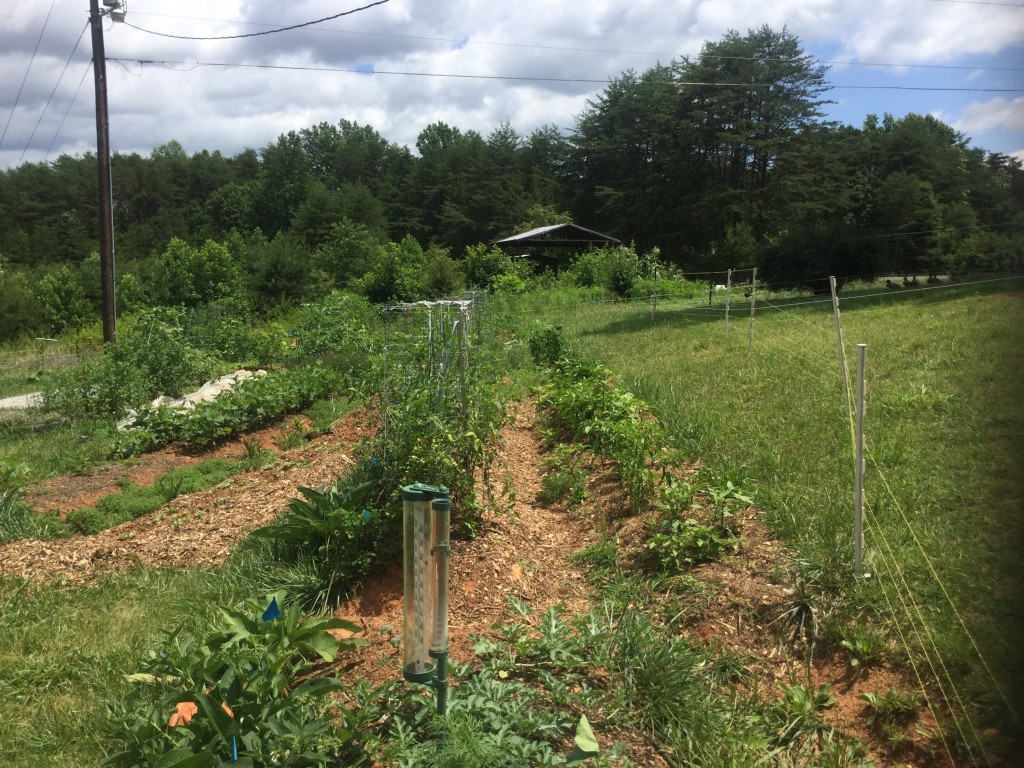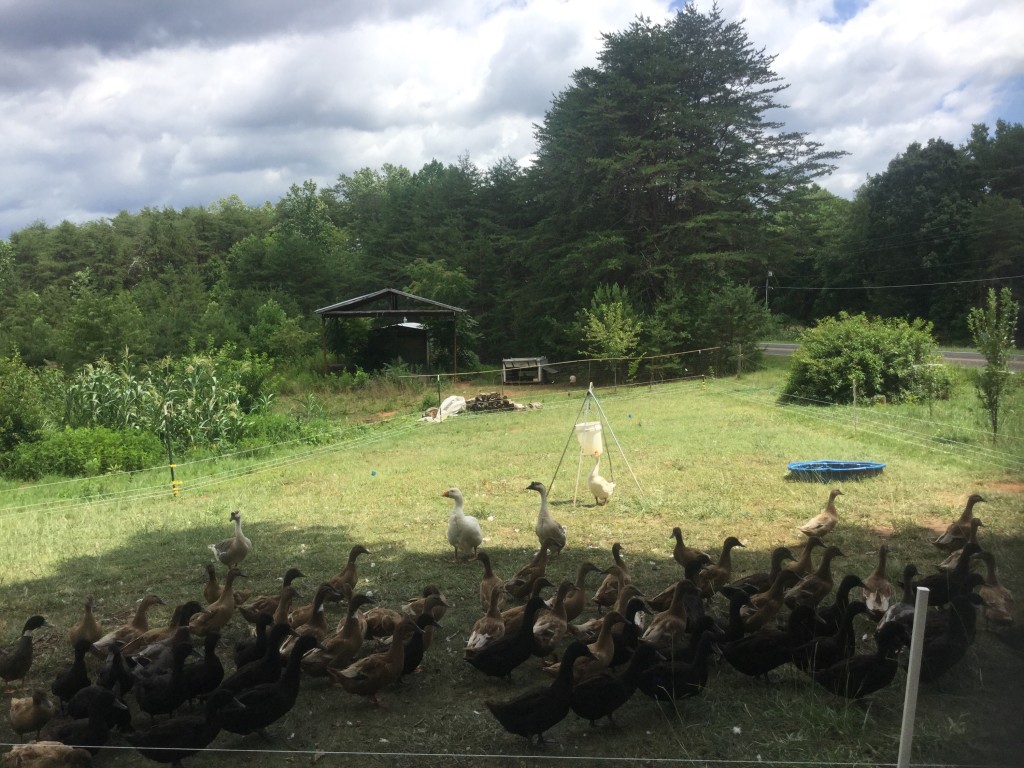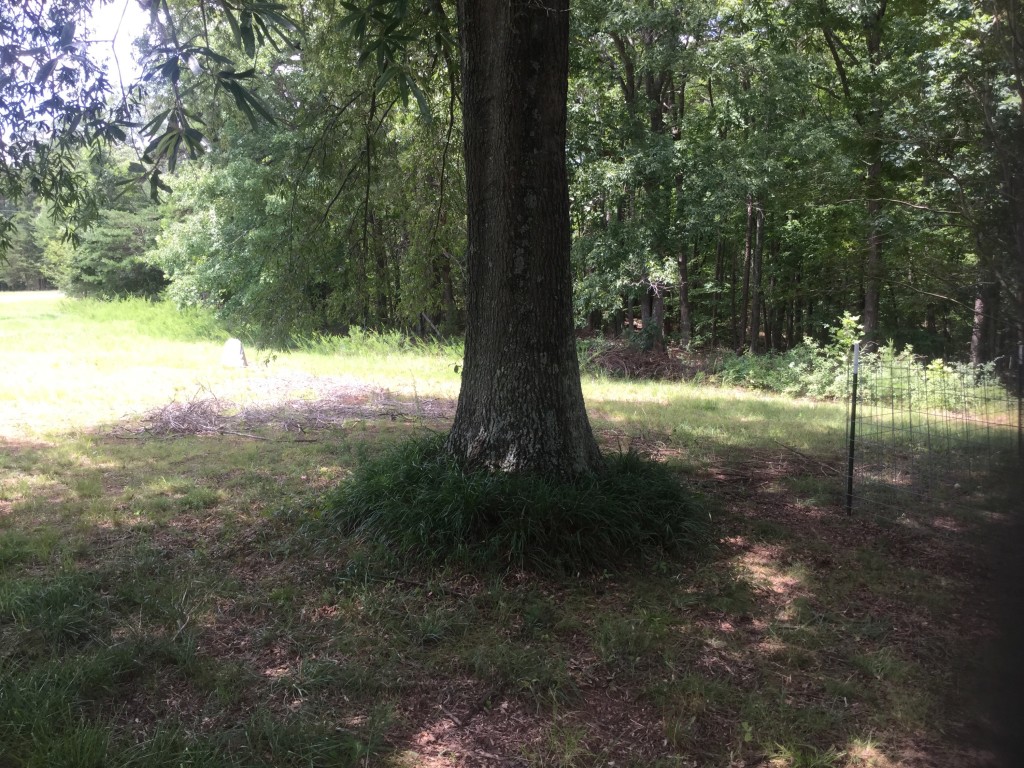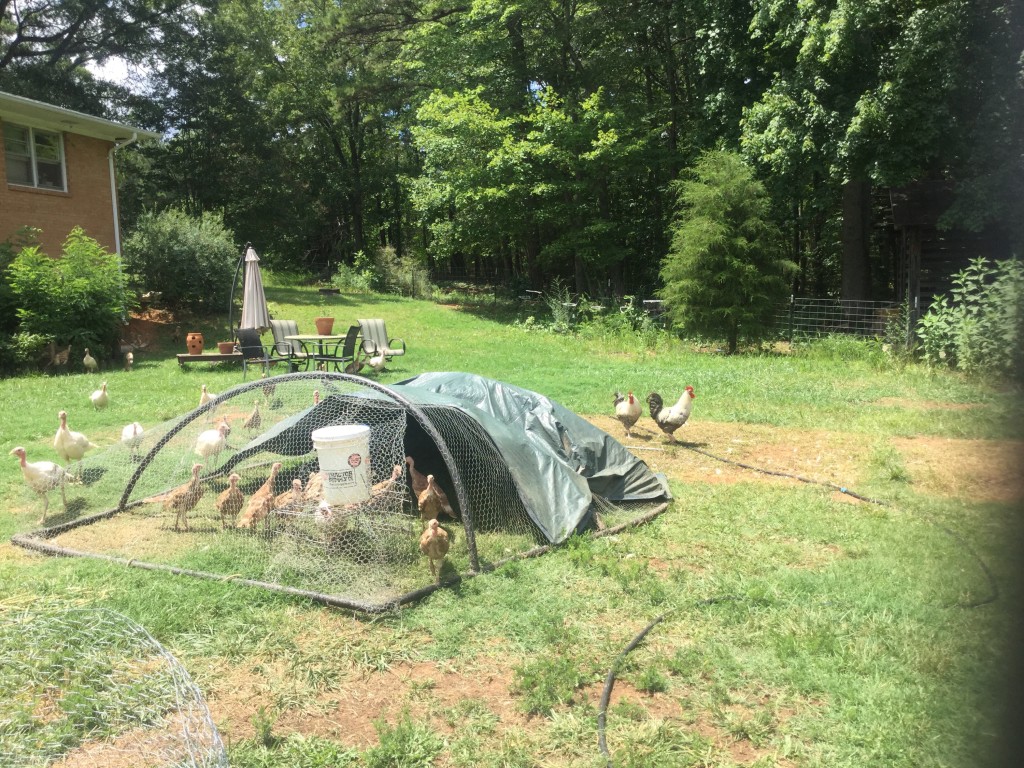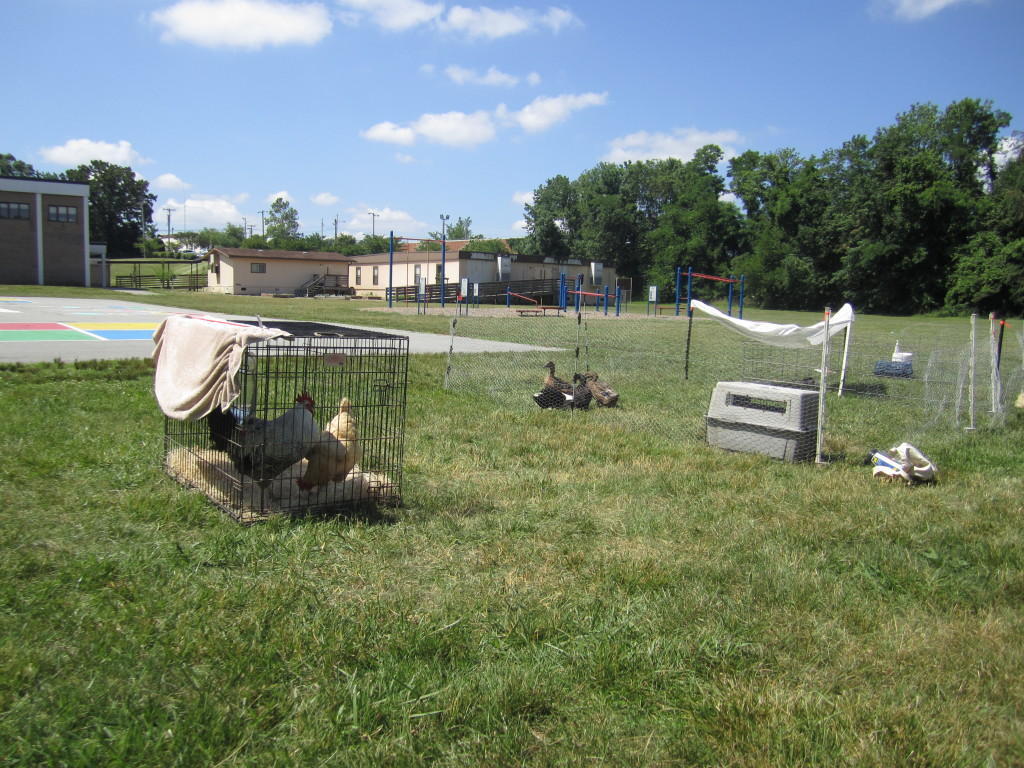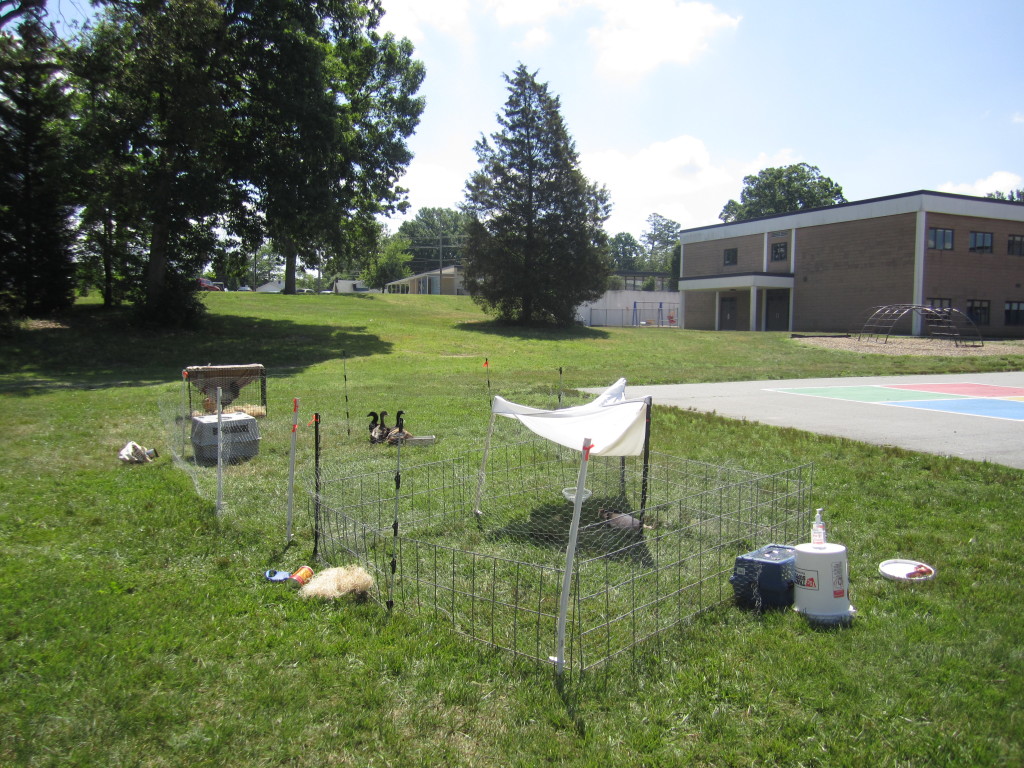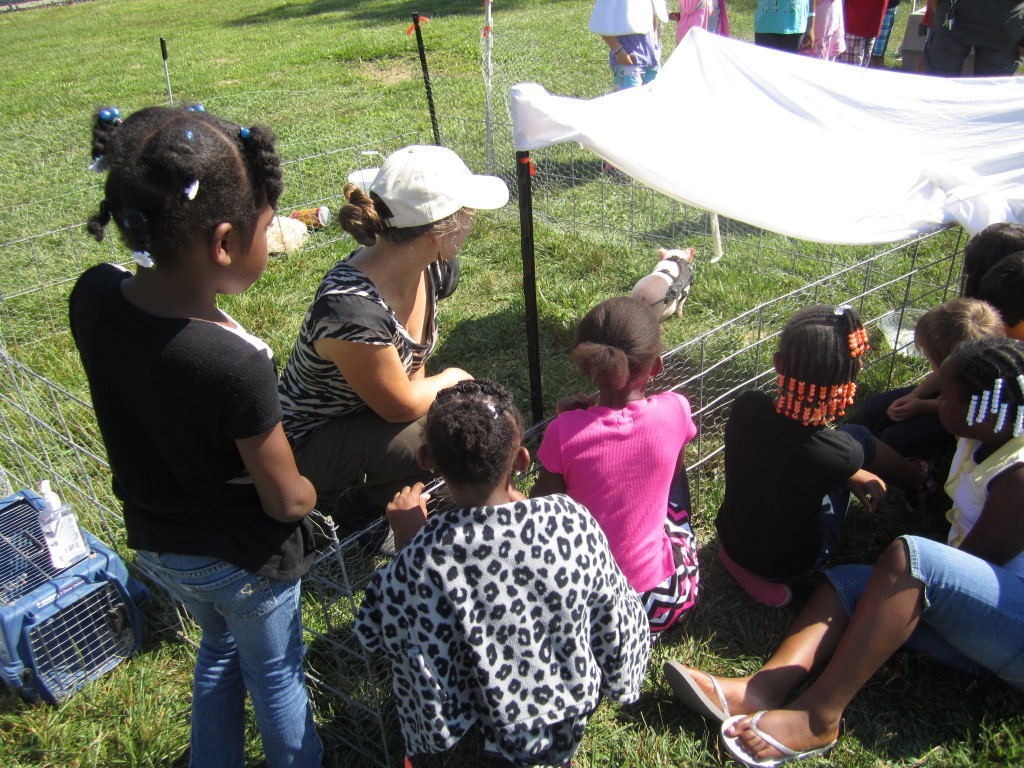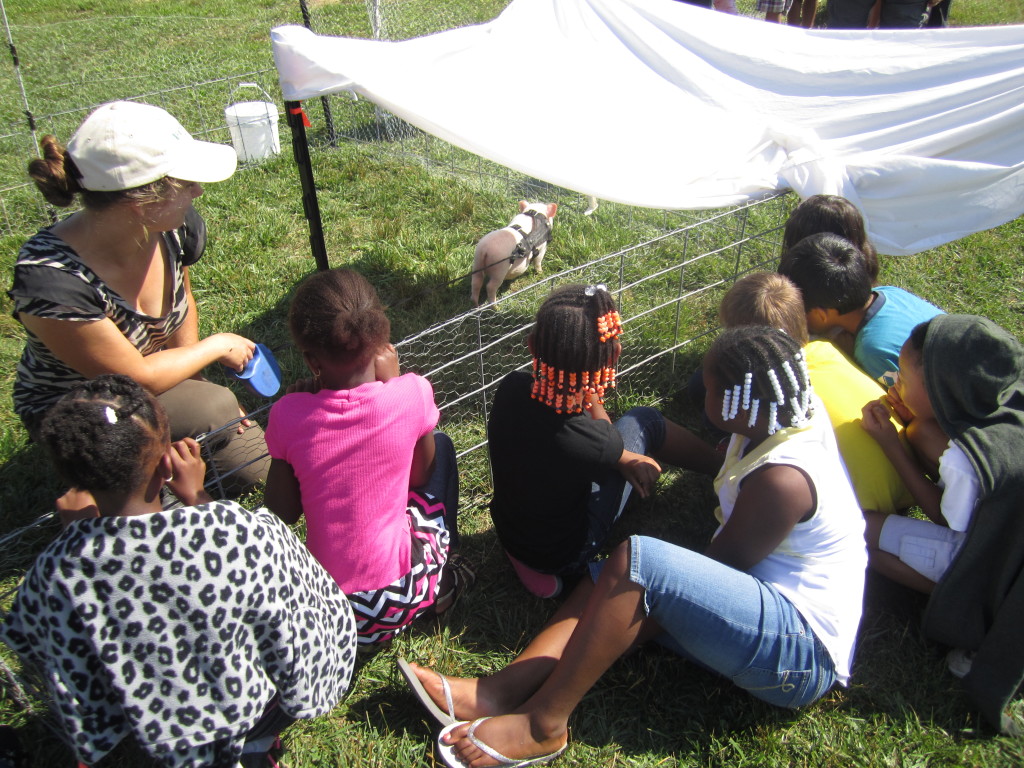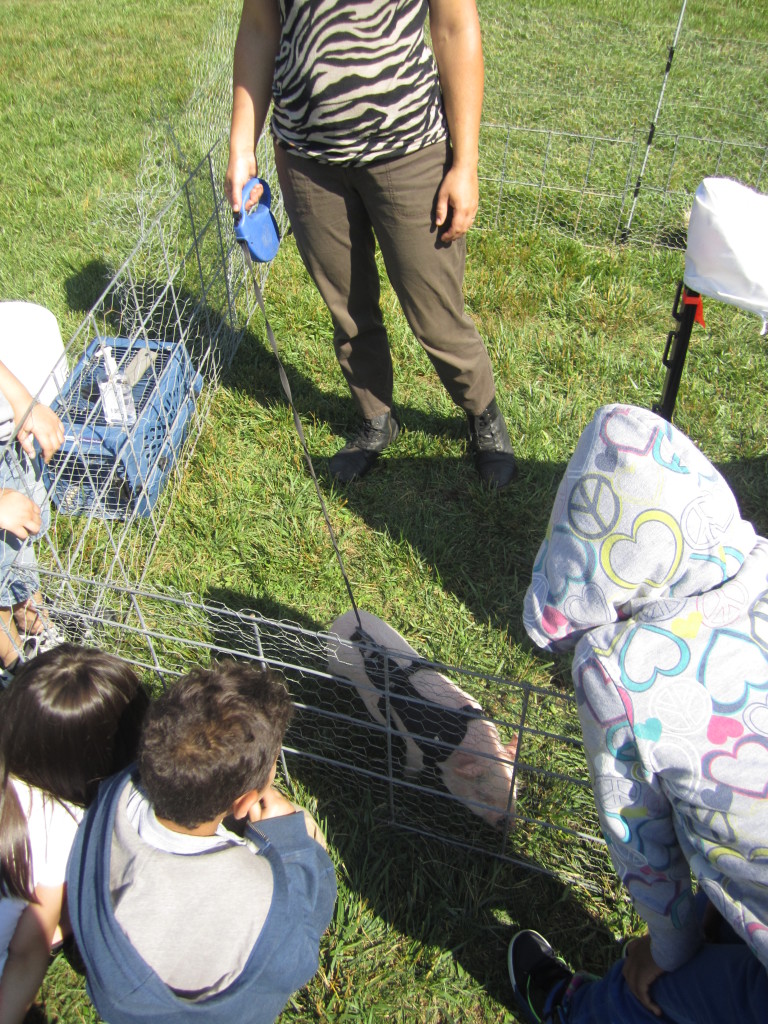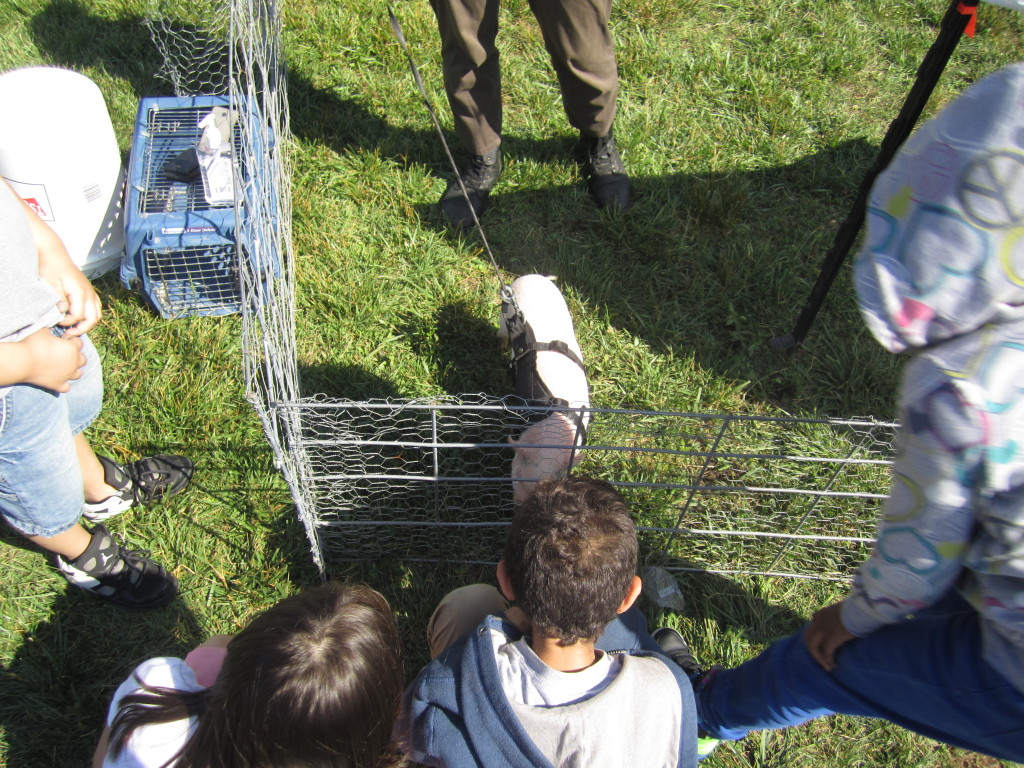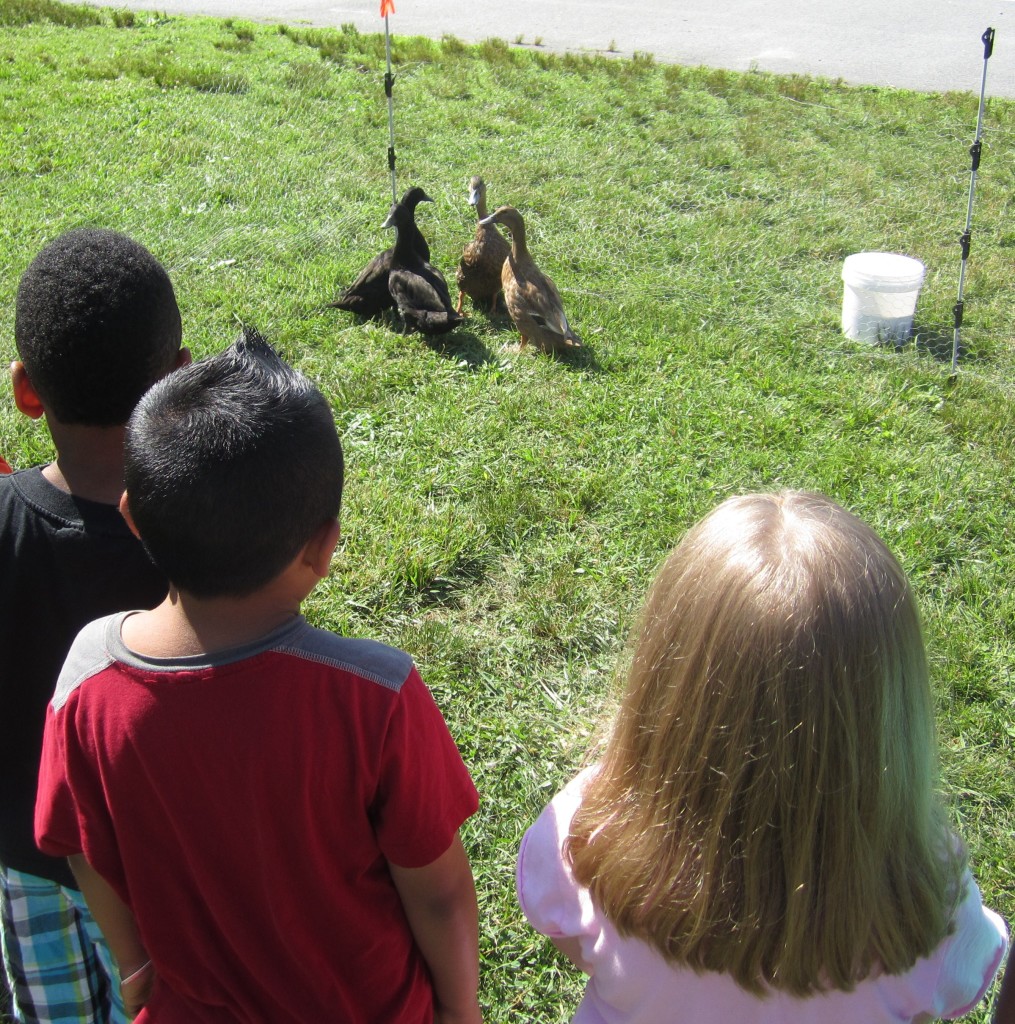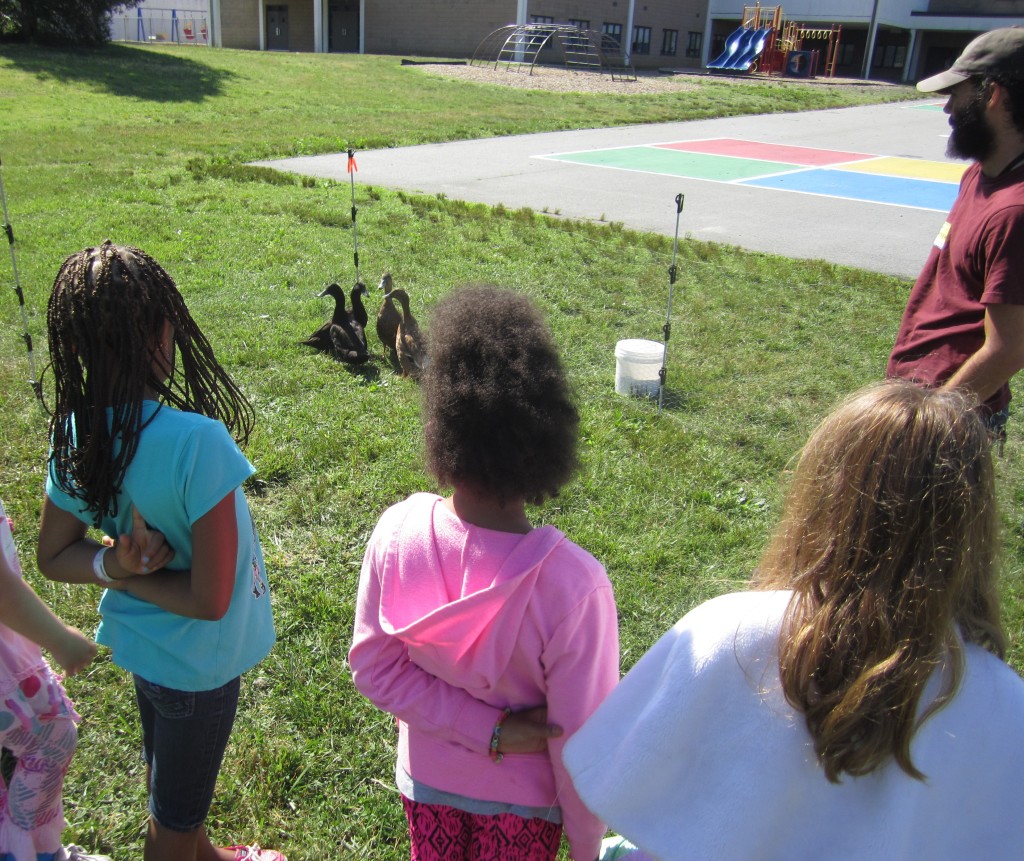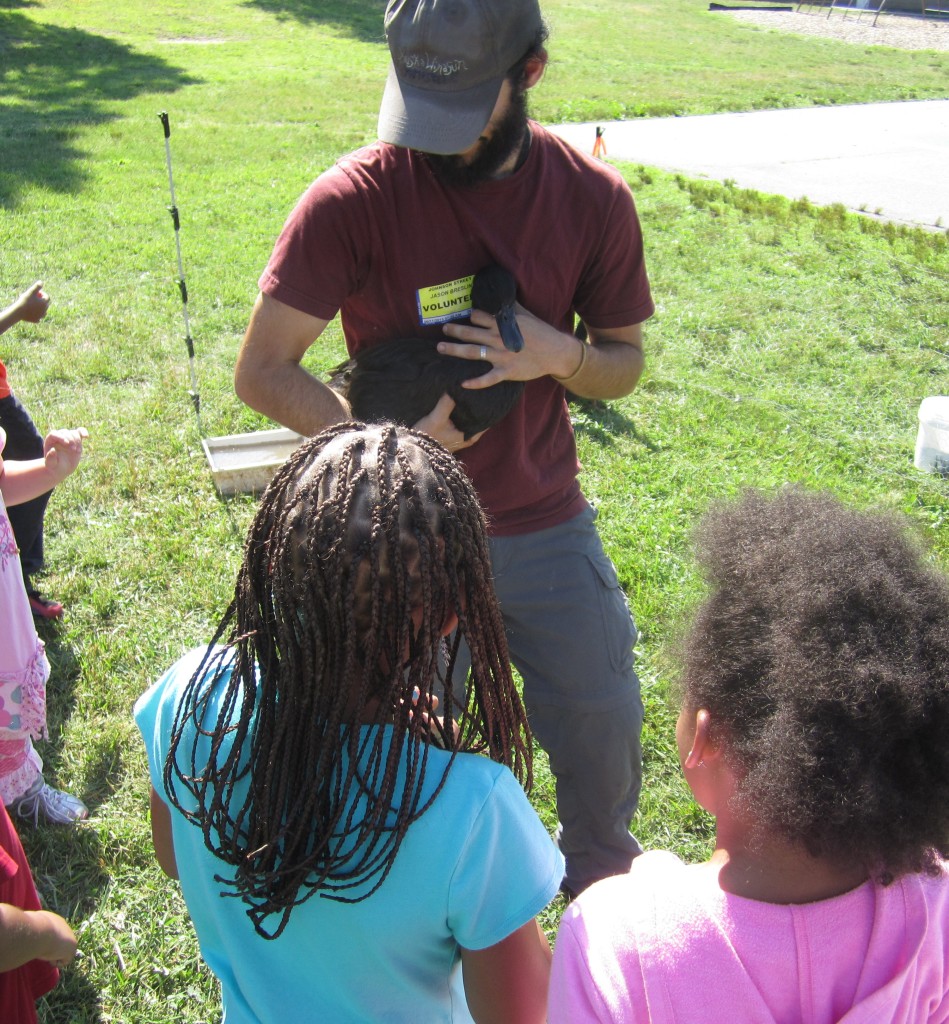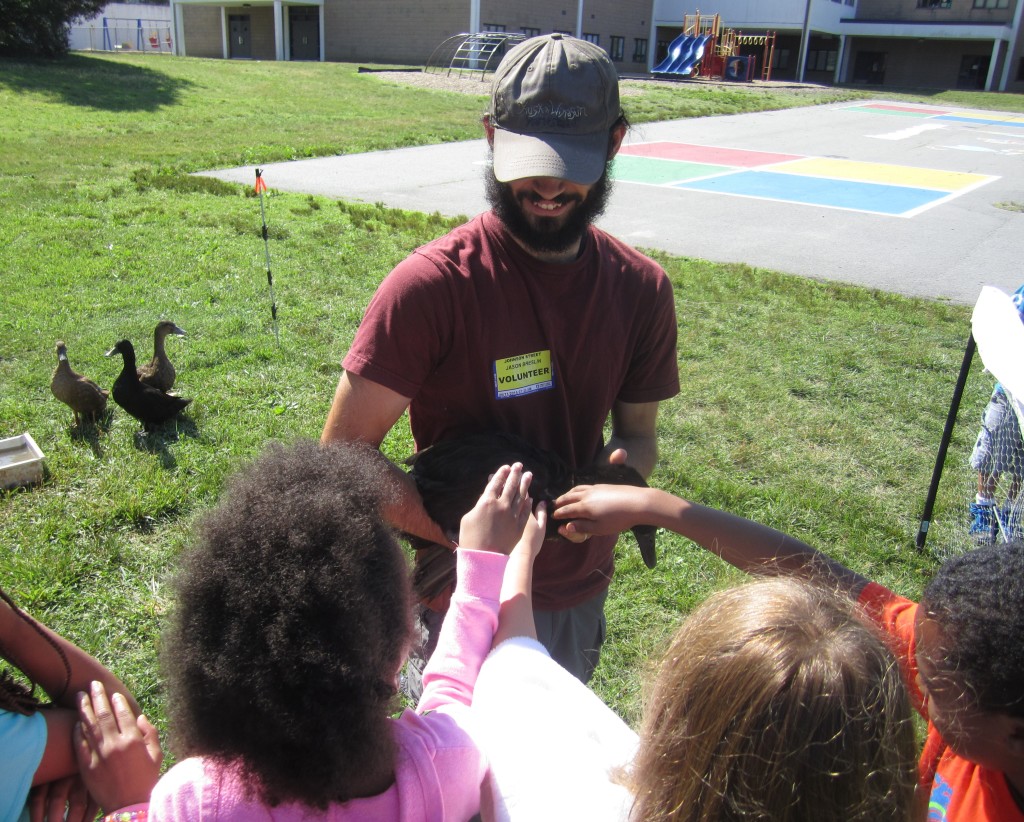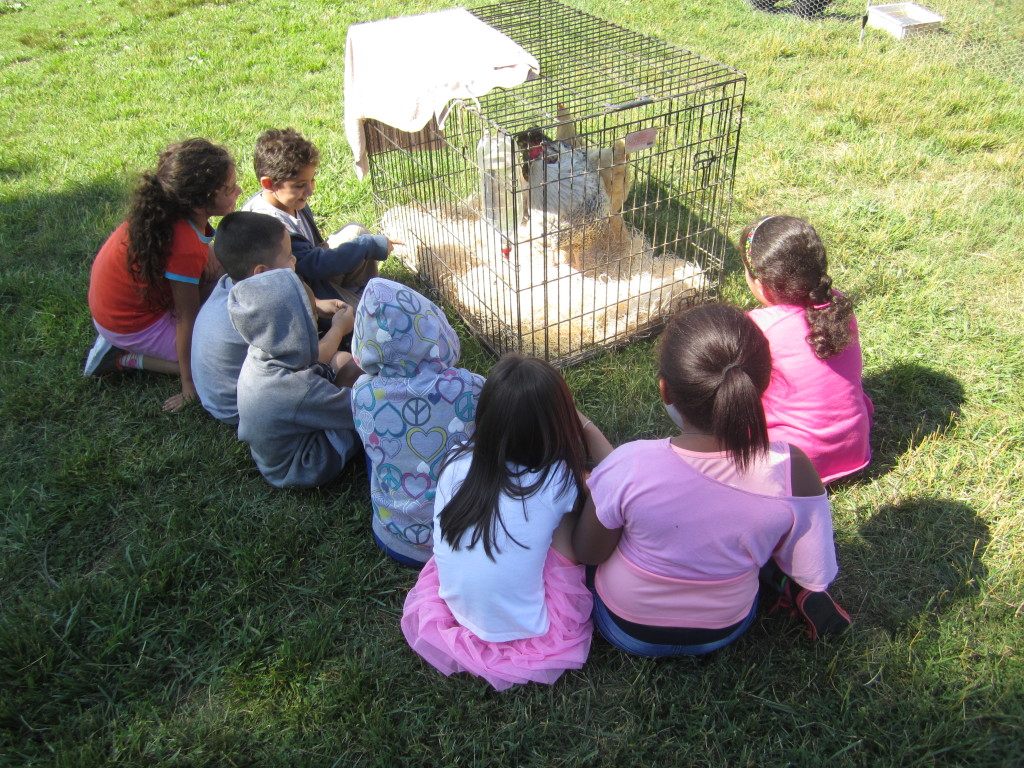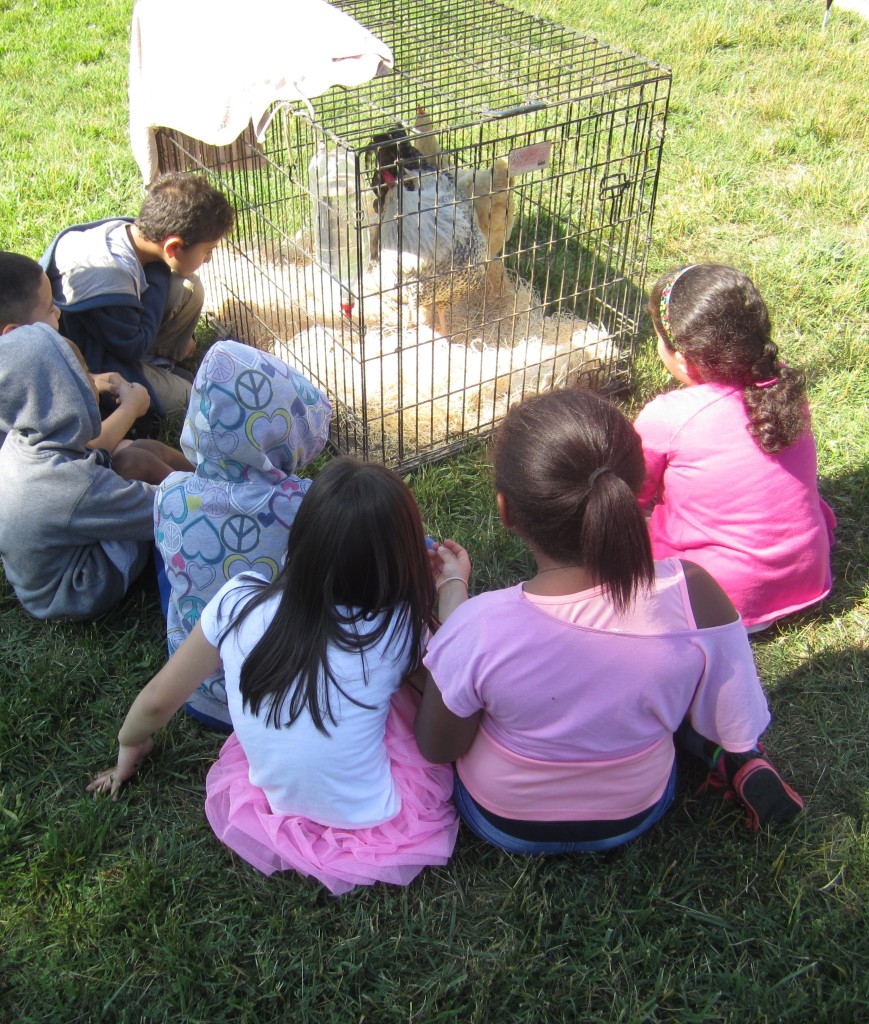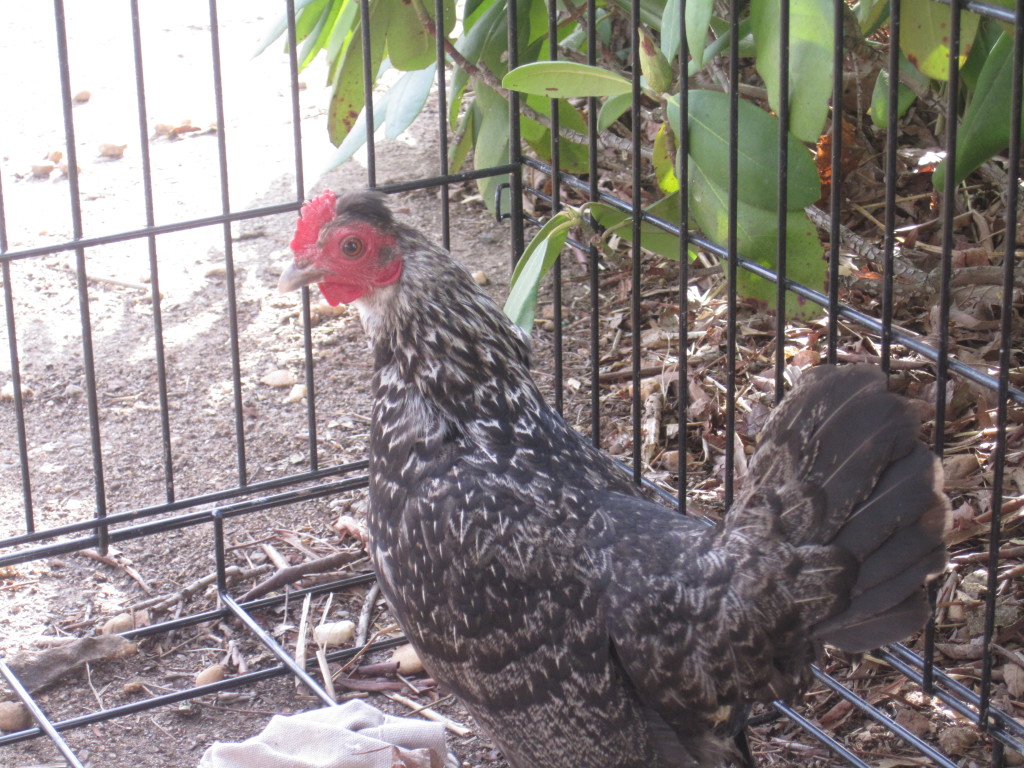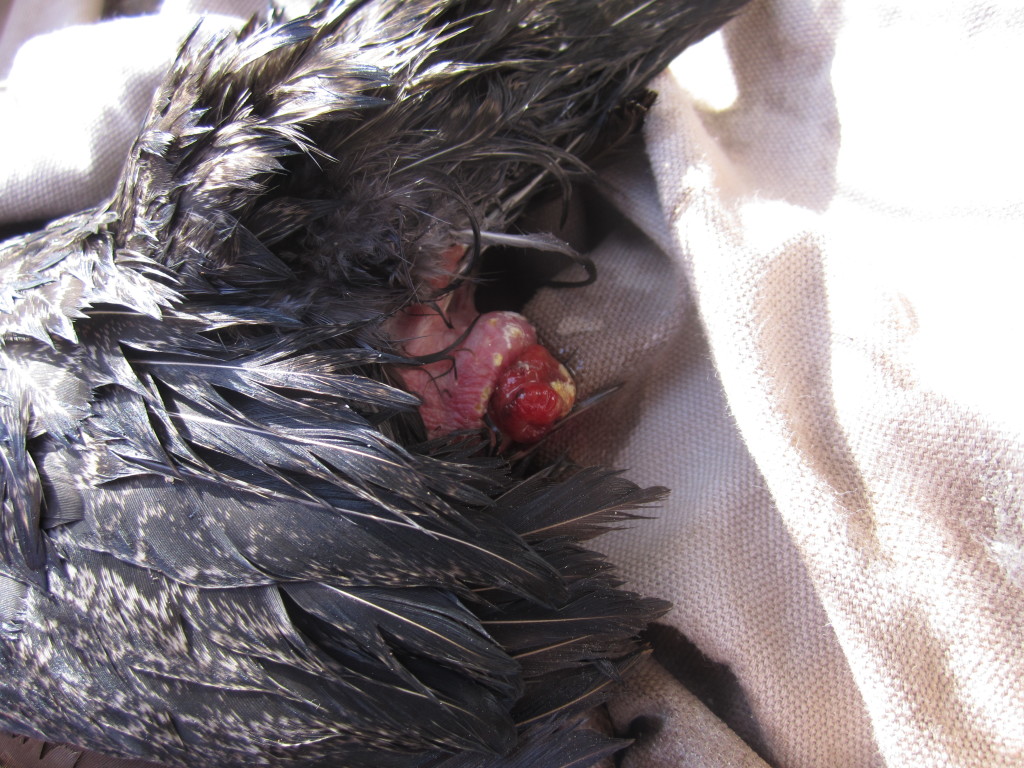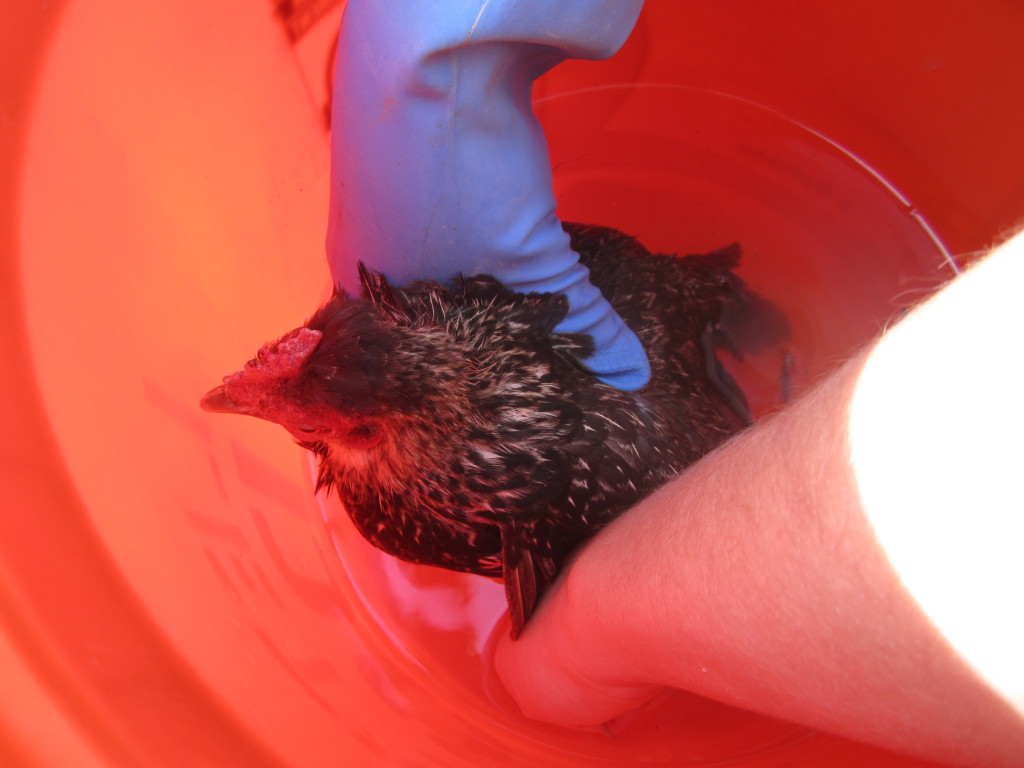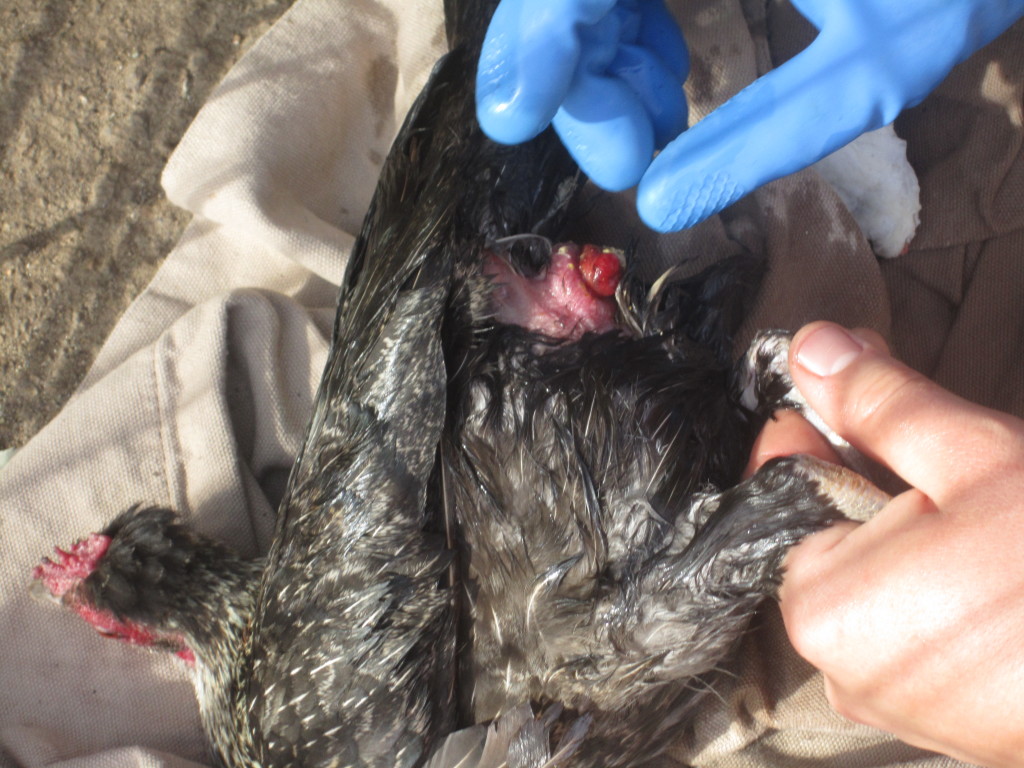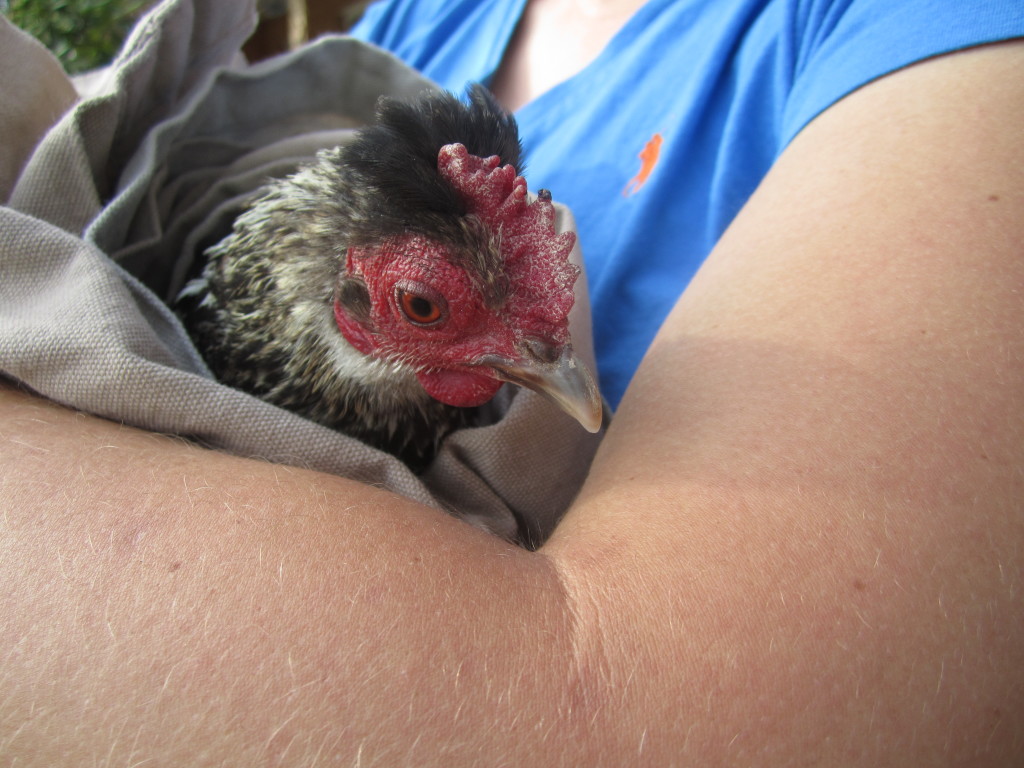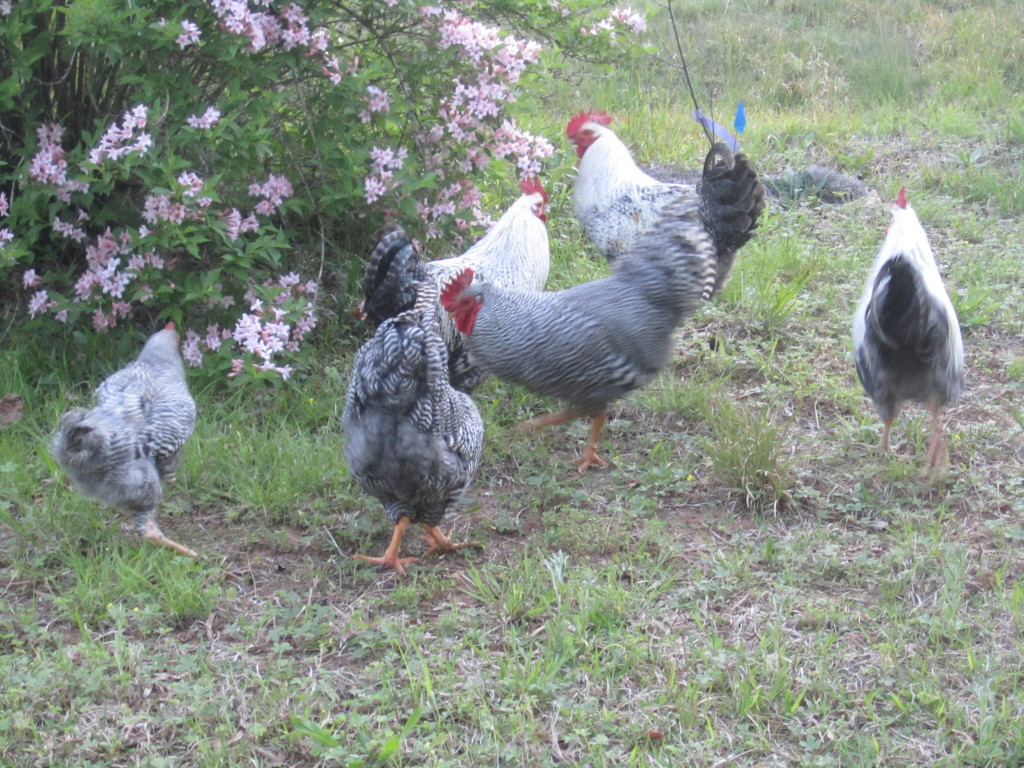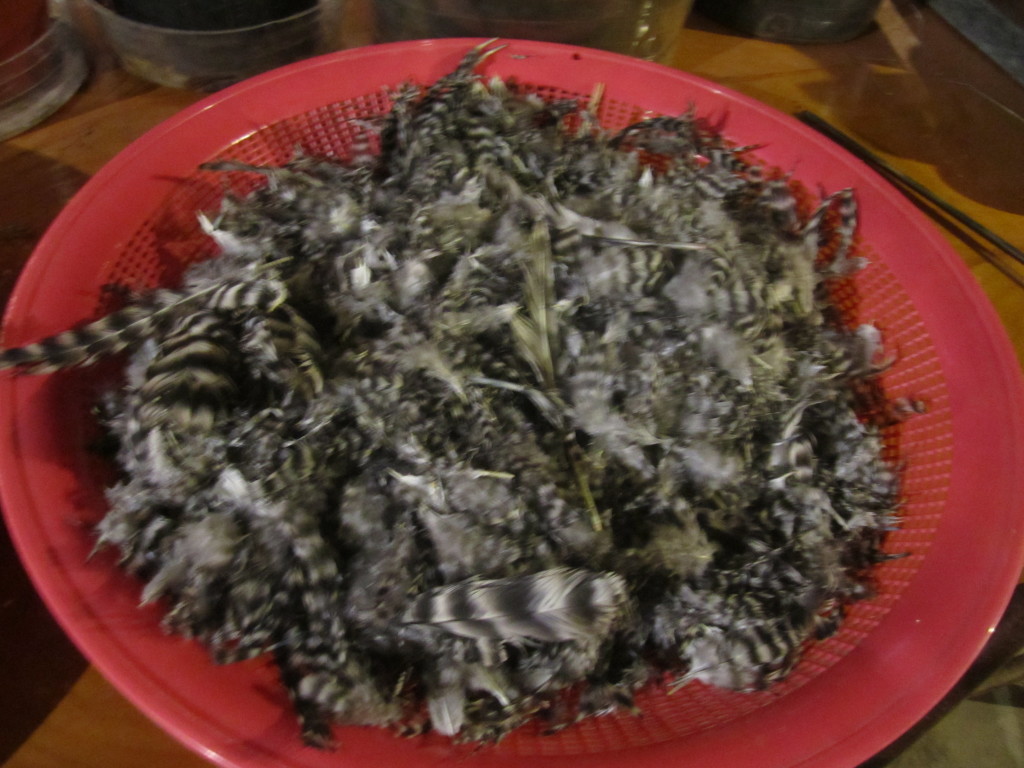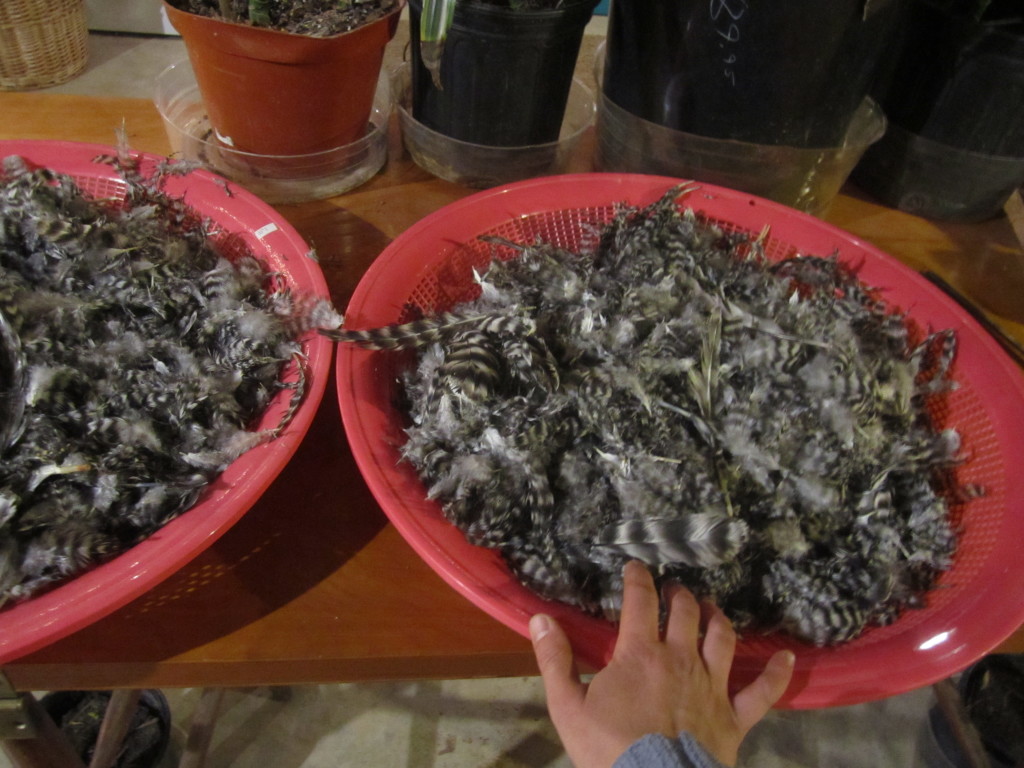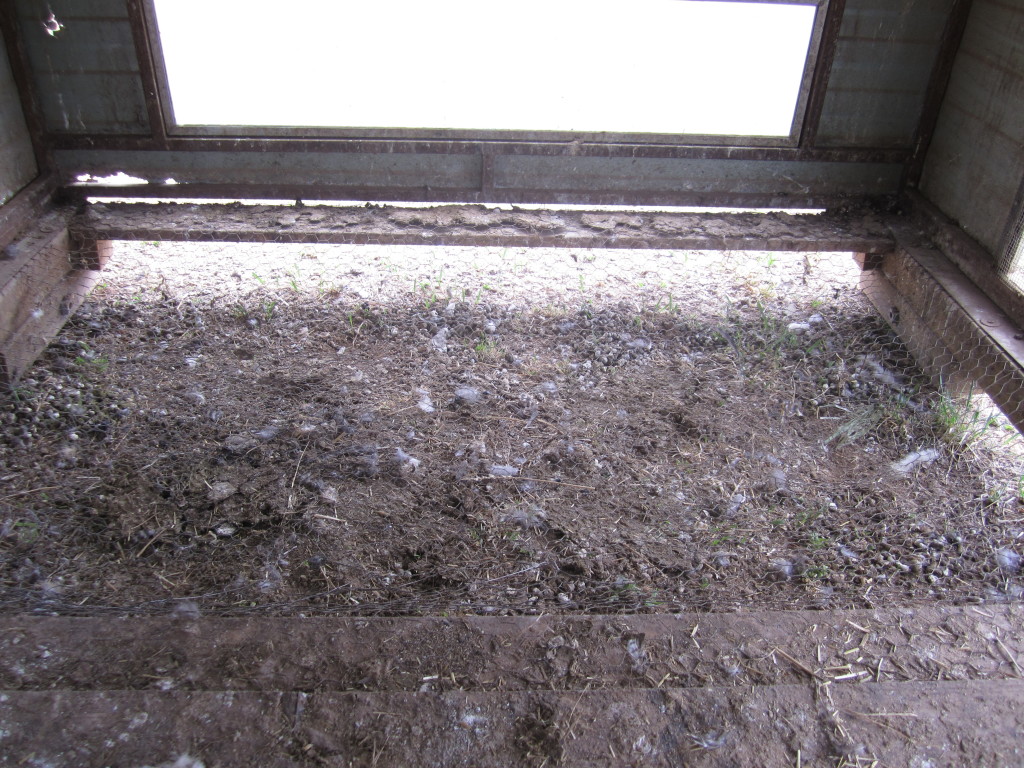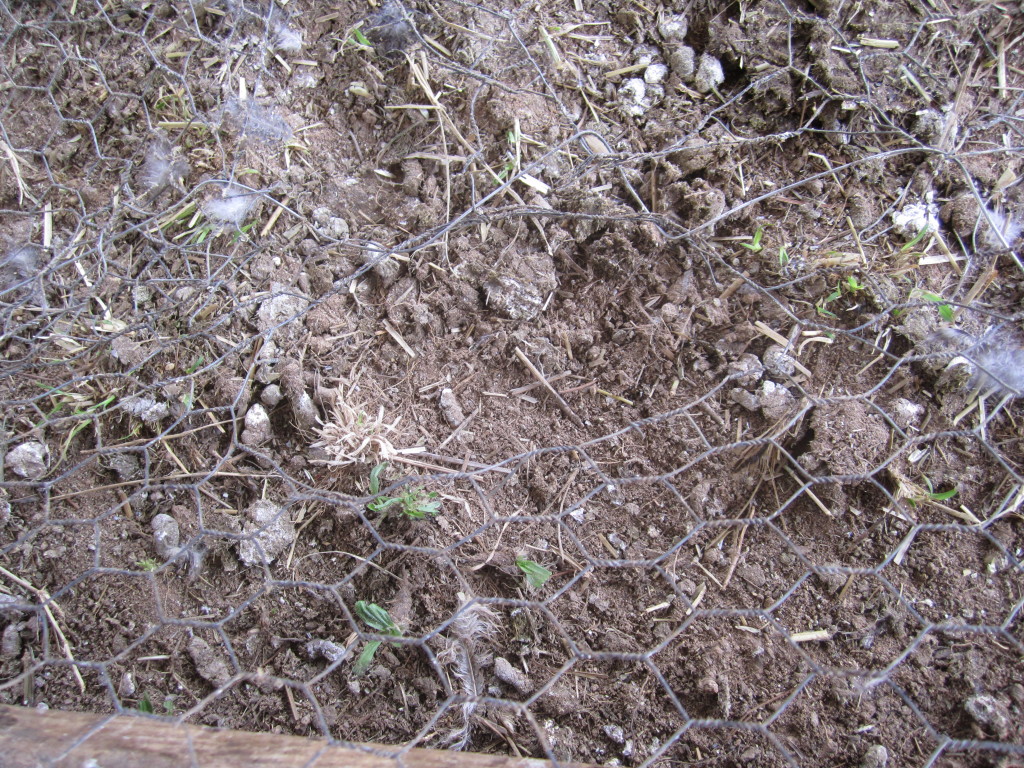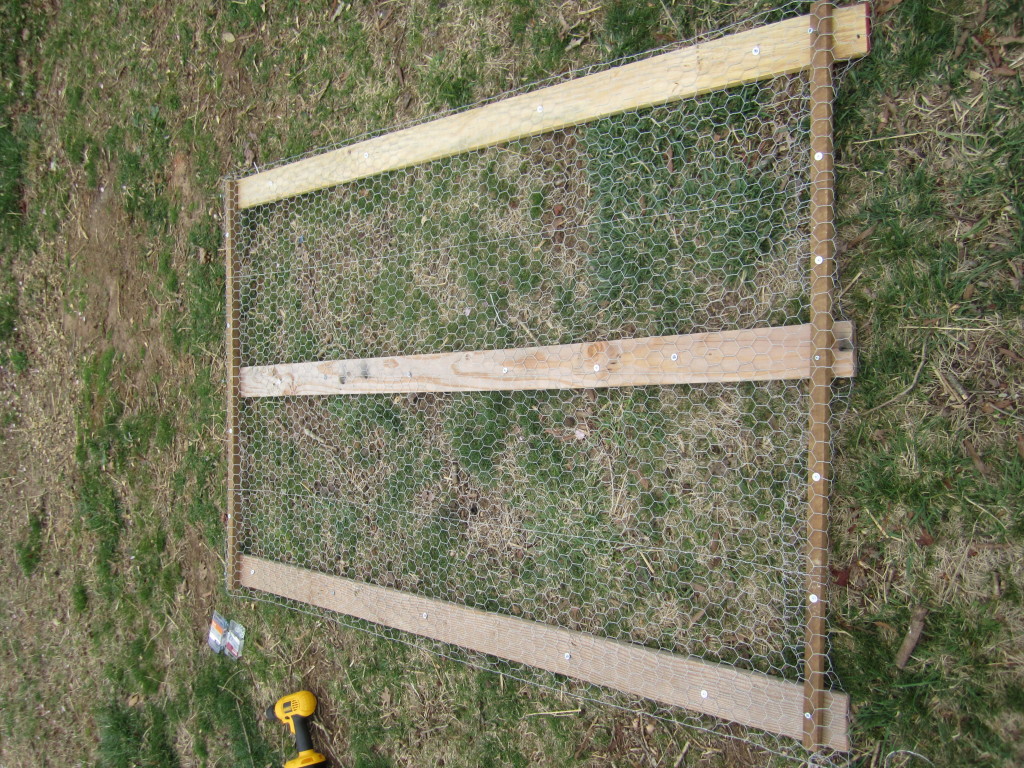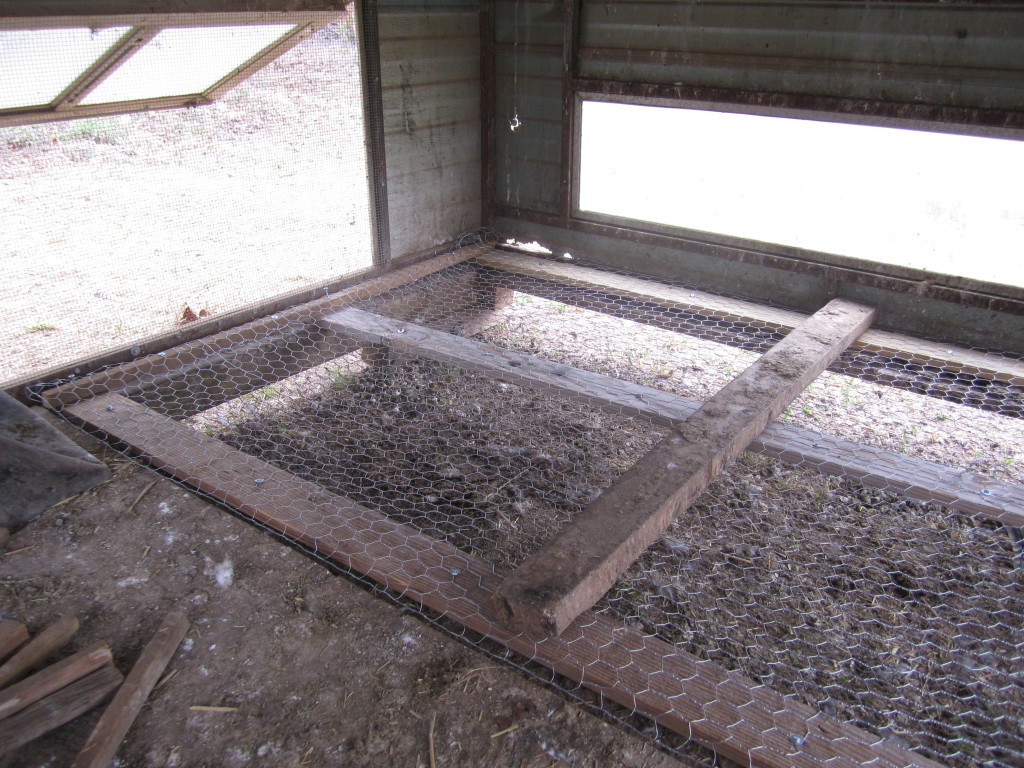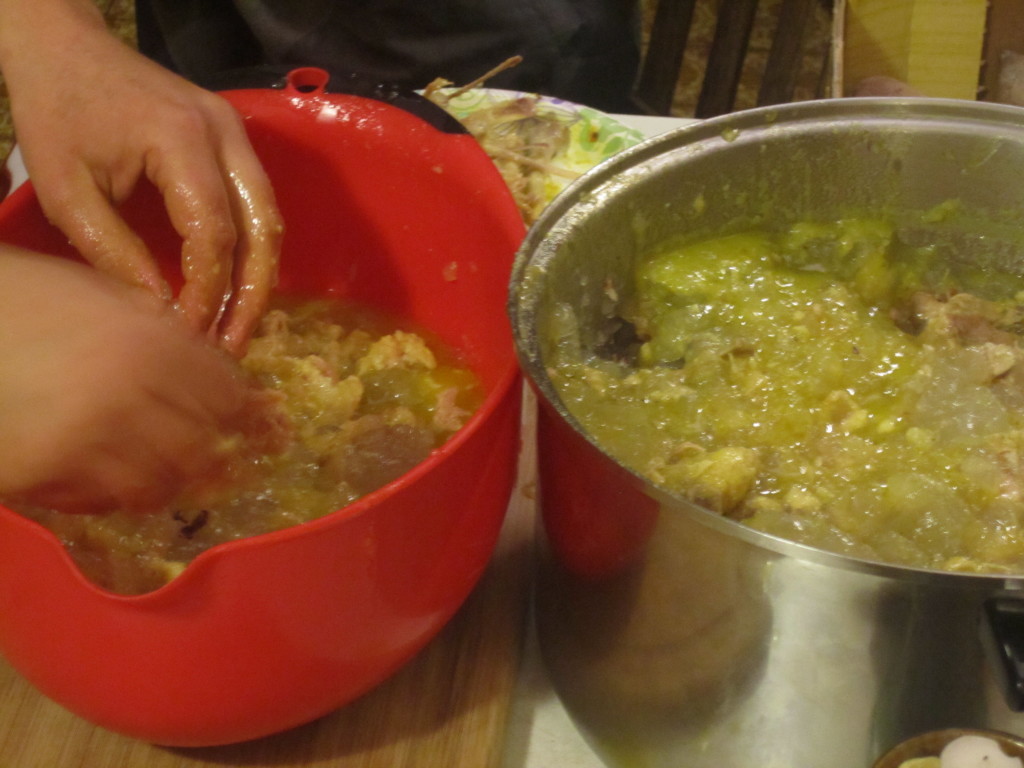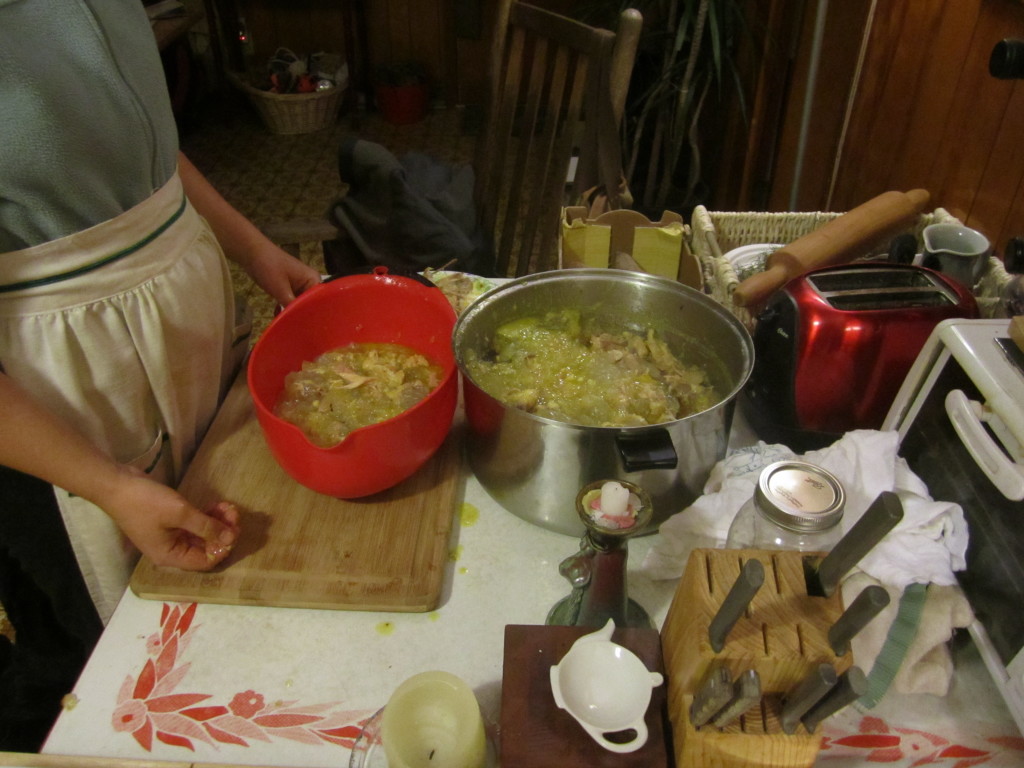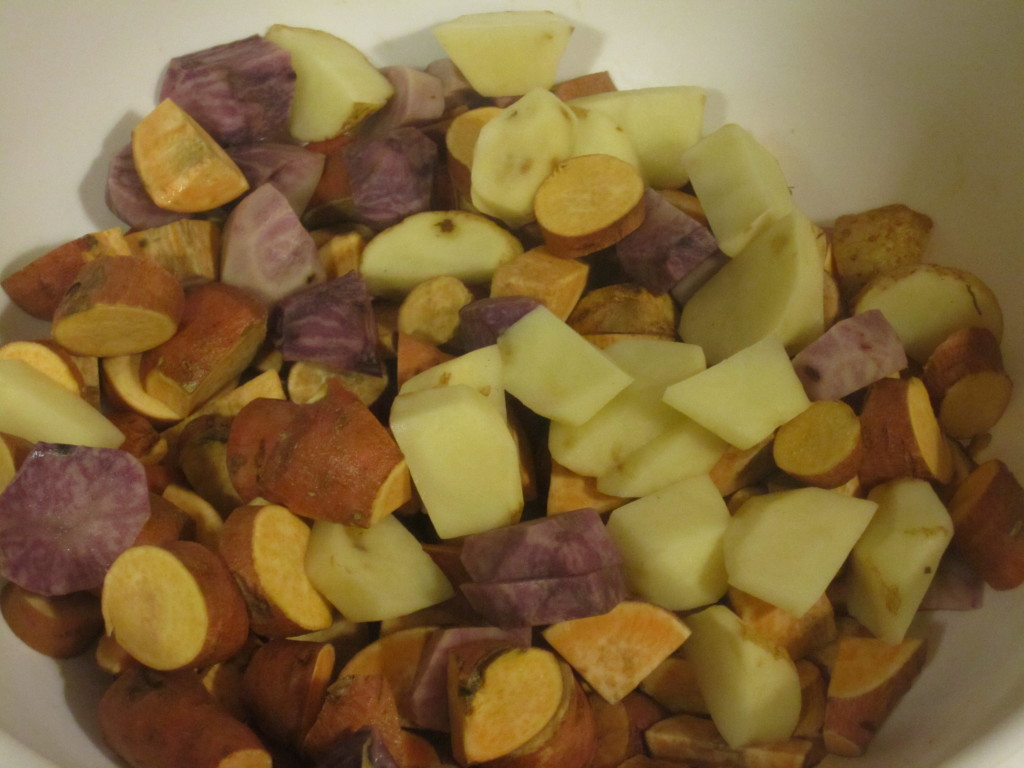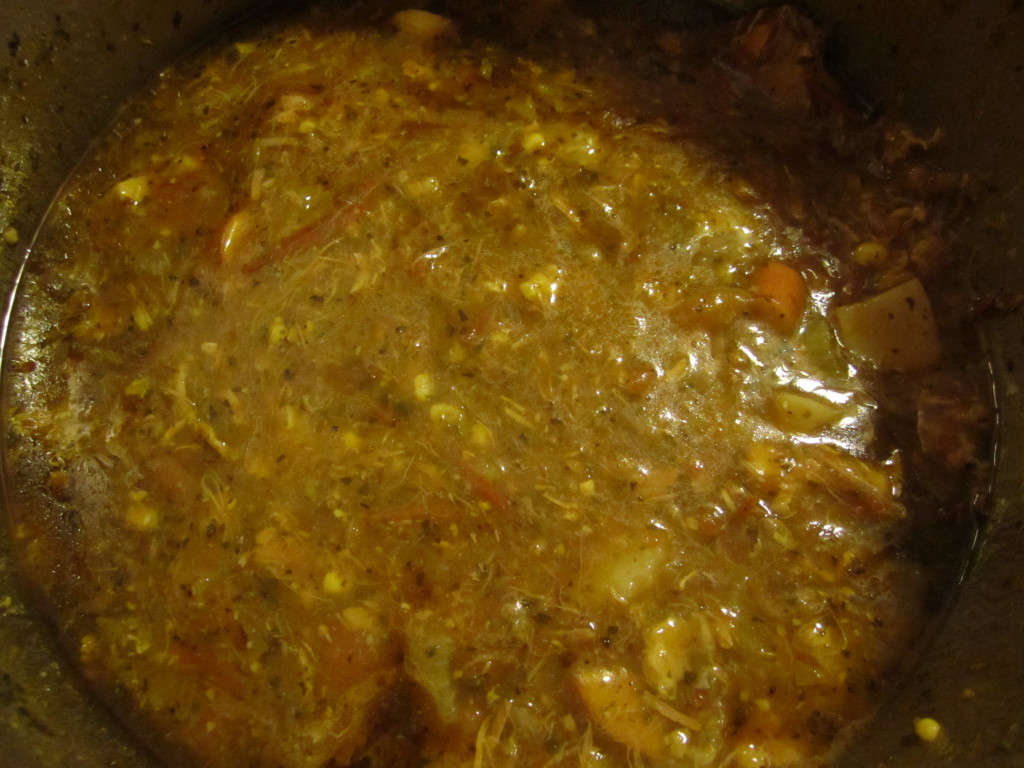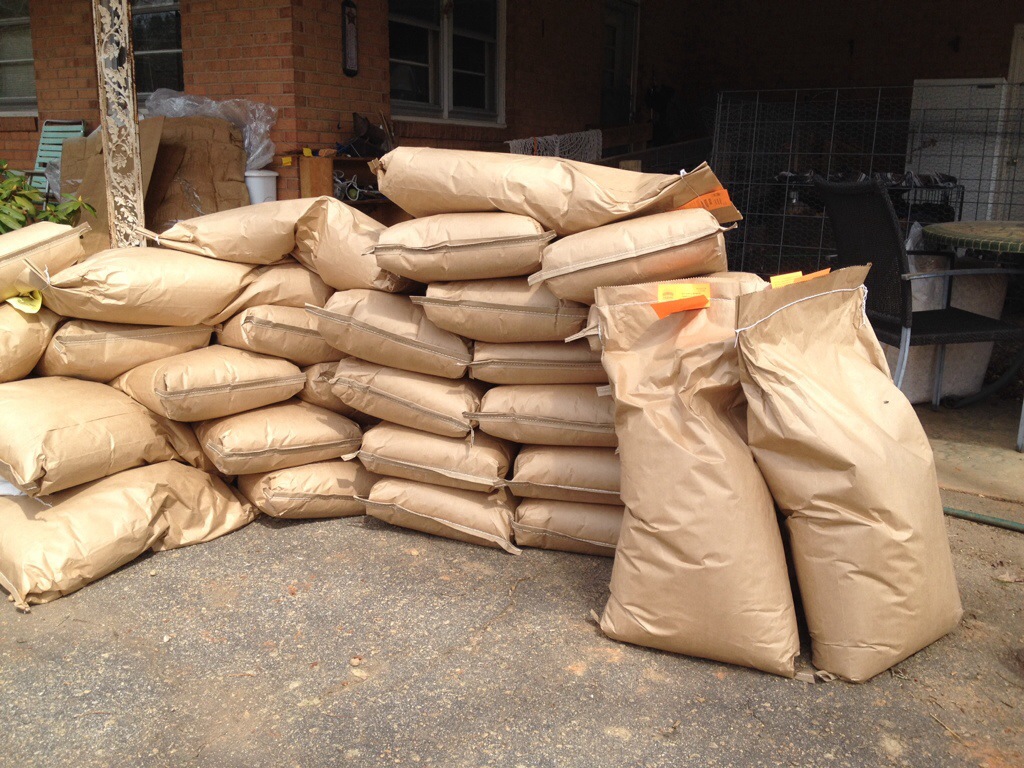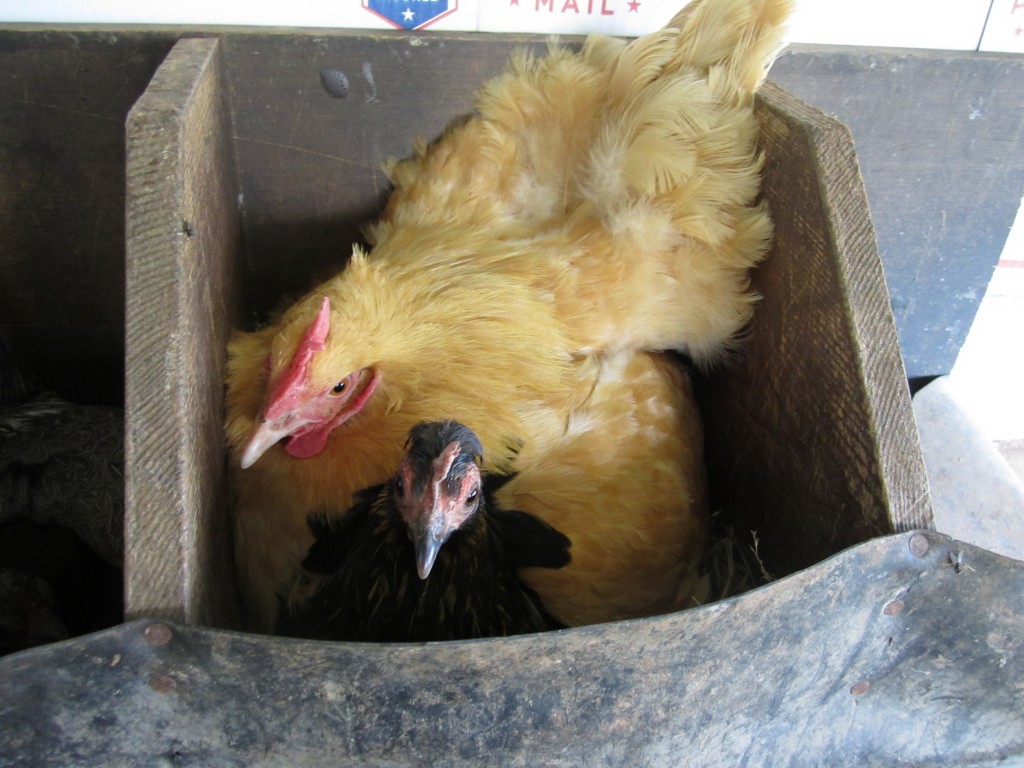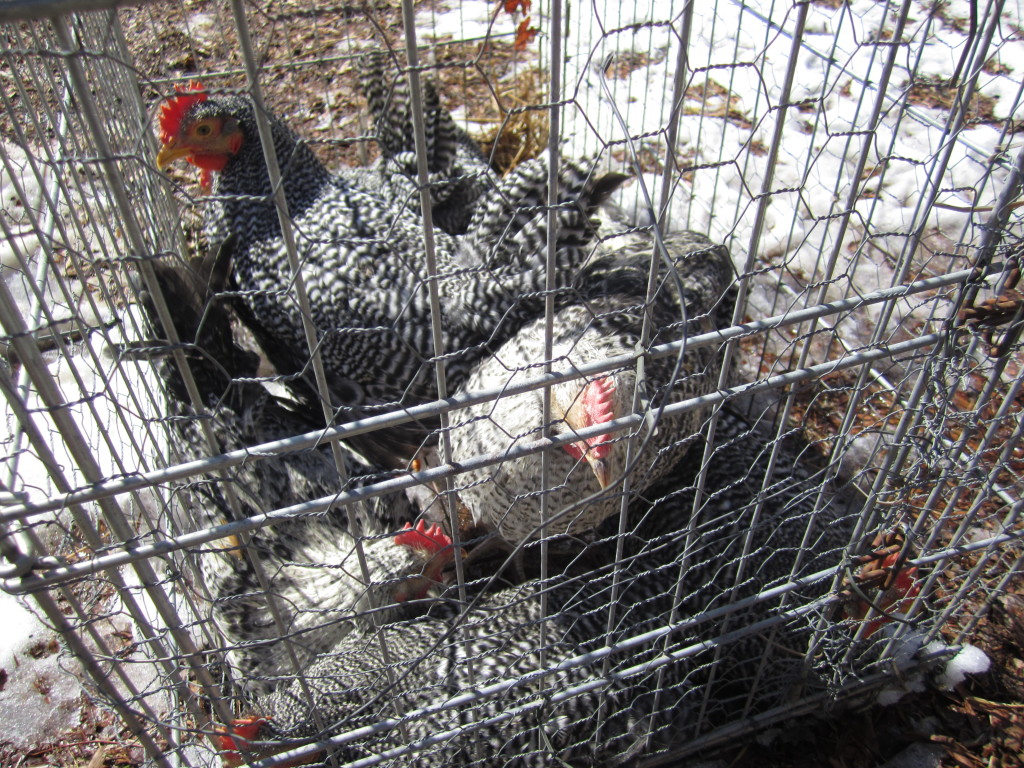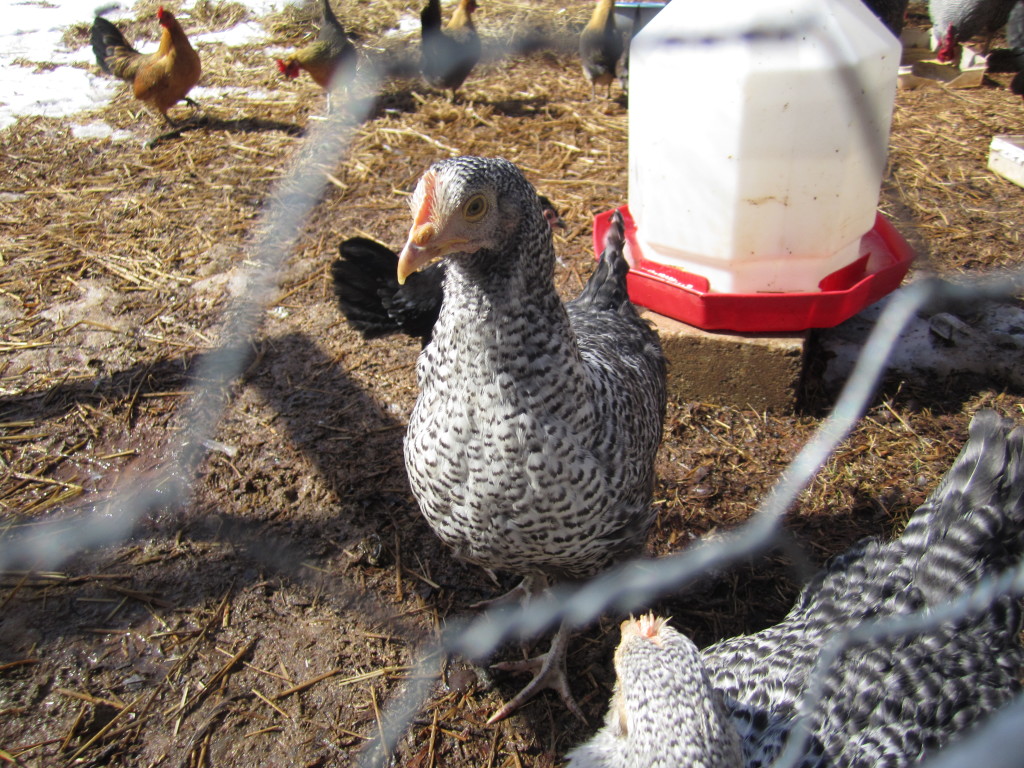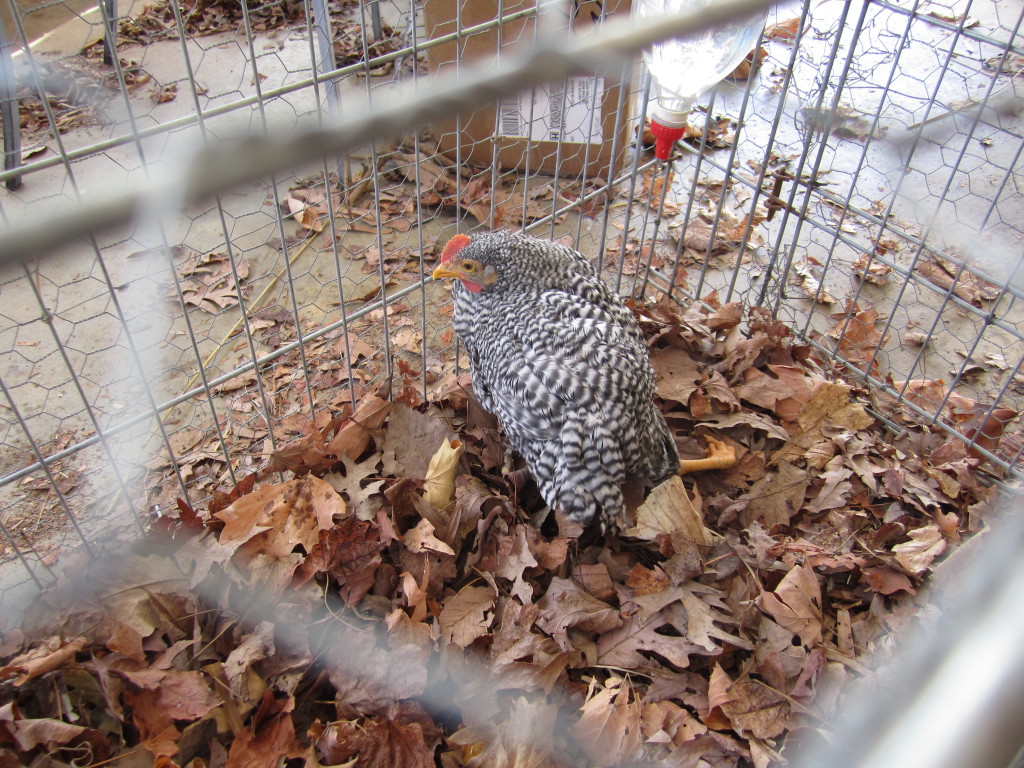We recently have set our chickens free!
And I mean REALLY free!
They are free to go anywhere on our land that they want to, except the garden (which is why we’ve electric fenced the garden out) and the carport (just because it gets on my nerves)!
The reason we made this choice is because we were tired of having to move their house and pen every week or so, and our flock is growing and we don’t want to expand the size of their space.
So, we decided to set them free and move their house way across our front yard to the edge of the woods.
They still get locked up in their house at night, since ground predators are a threat, but so far the aerial predators have not taken any standard sized chickens. A bantam has gone missing, but we expected that we might loose more chickens when we gave them free range of the whole property. We think it’s a risk that chickens would like to take, considering how much happier they are! We’ve kept 3 of our hybrid roosters, in addition to Rex, so that they can help protect the flock in the case of an attack. We’ve started calling these roosters the Musketeers, since they often stick together.
We are really happy with our choice to allow them to be completely free range, except for one thing… The eggs! Only a few of them are still laying their eggs in their house, and we have had a really hard time finding their other rouge nests. Even when we find one and replace some of the eggs with golf balls (so they don’t know that we found it) they still abandon that location and look for new places to lay eggs.
At this point, we’re only finding about 5 eggs a day, and even though this isn’t enough to sell any, we still feel like it’s all worth it. Because they are free ranging we feed them so much less food, so they are almost free to keep around!
The funniest thing about having them free ranging everywhere, is seeing the places they choose to go. One hen always sleeps in a tree in the backyard, and many of the younger hens like to hang out with the pigs all day! The Musketeers high-tail it over to the backyard in the morning to get some of the leftover turkey food that the cleanup ducks missed! I just have to watch out for Rex when I’m outside, since he’s started attacking me again lately!
Three cheers for free chickens!
.:.
